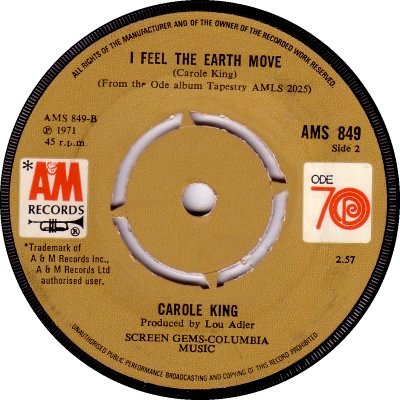

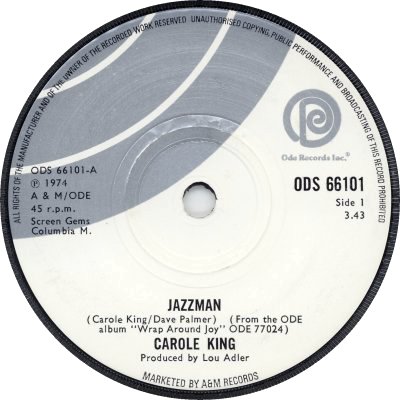
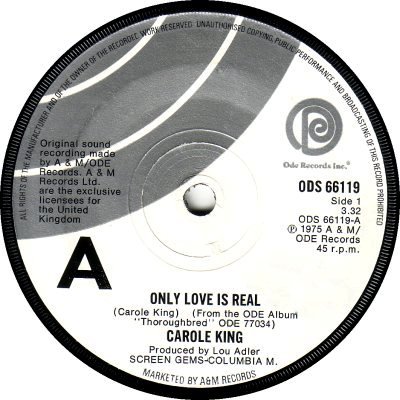
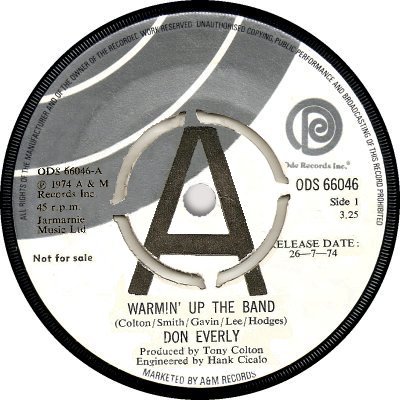
American. Ode was started by Lou Adler in 1967, after he sold his 'Dunhill' label. In Britain, selected Ode records were initially licensed to CBS and appeared on that label - Scott McKenzie's hit, 'San Francisco', was one of them. Then in its issue of the 11th of April 1970 'Record Retailer' revealed that the company had joined up with A&M. 'RR' of the 31st of October of that year observed that Ode's name had been changed to 'Ode 70'; Ode's records were issued on A&M at first, with the 'Ode 70' logo added to the A&M label (1). From November 1972 the name seems to have been changed back to just plain 'Ode', and releases appeared on the Ode label proper (2). When A&M switched from Pye to CBS for manufacturing and distribution, on the 1st of April 1974, Ode went with it ('Music Week', 9th February 1974). The final Ode releases appear to have come out in 1976, and Billboard of the 9th of April 1977 reported that Adler was checking possible buyers of the label. That same year Ode teamed up with Epic to form Epic-Ode (q.v.). The label's biggest selling artist was Carole King, but its only Singles Chart placing over here came courtesy of Roger Daltrey ('I'm Free'; ODS-66302) in 1973; King's 'It's Too Late' was a Top 10 hit in 1971, but that was on A&M (AMS-849) with the 'Ode 70' logo added.
The basic design of the Ode label remained the same throughout its existence, but there were minor changes. The move from Pye to CBS saw a slight alteration in the logo, with the outer ring disappearing and the text becoming 'Ode Records Inc'; in addition A&M's address no longer featured in the text at the bottom of the label (3). From September 1975 the labels gained a medium-sized black 'A' on the left hand side; a similar 'A' appeared on A&M's own singles, and it merely denoted the 'A' side, not that that record was a promo (4). Ode issues were only available in promo form from December 1973 to February 1975; their labels had a large central 'A', the text 'Not For Sale' and the release date on them (5) - thanks to Nicholas Hough for that picture. The company used two slightly different numerical series for its singles simultaneously: ODS-66000, in which numbers were the same as those of the American issues, and ODS-66300, which appears to have been for British releases. Not everything which was released abroad was released in Britain, which accounts for the large gaps in the catalogue listing below.
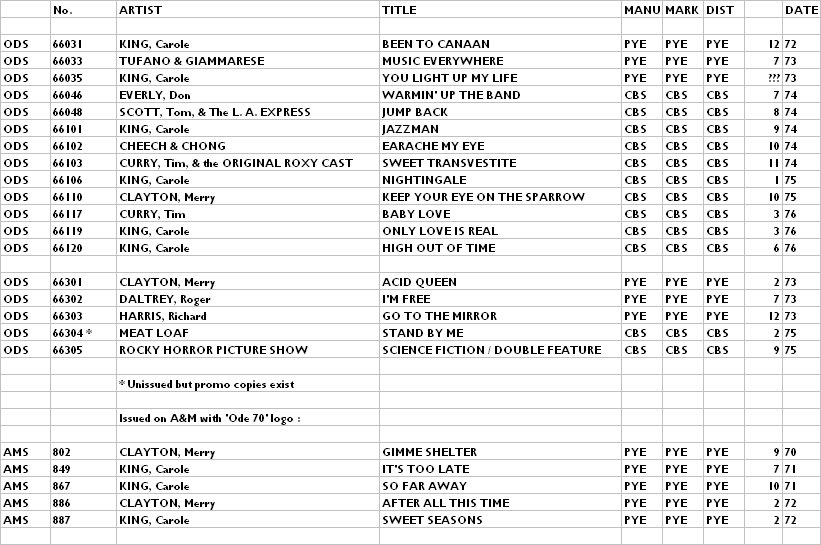


Copyright 2006 Robert Lyons.

